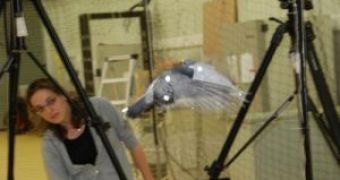Man's desire to fly is known to have existed ever since the earliest recorded history. To fulfill his dream, man turned to nature and tried to copy the winged creatures, most of the times such attempts ending in disasters. We only have to look at today's flying machines to understand to that we have never really been able to completely imitate nature, as bumblebees don't bear any resemblance to helicopters (except for both being able to fly) nor do airplanes flip their wings in order to take to the skies.
Nevertheless, when in search of inspiration, nature still provides the best examples for engineers to follow, although understanding this apparent contradiction seems to become harder and harder by the day. Some researchers, like Dr. Jim Usherwood of the Royal Veterinary College for instance, would think twice before copying Mother Nature.
Winged creatures and the flying machines of the day not only that don't look alike, but don't even use the same mechanisms to fly, he says.
"Animals' wings, unlike propellers, have to keep stopping and starting in order [to] produce lift (animals have forgotten to invent propellers, just as they forgot wheels). Think of vigorous waving, or perhaps exuberant rattling of a cocktail shaker - this takes a fair amount of power to overcome inertia. So, the idea is that both wing shape and how wings are used can be understood better if the effort of flapping is remembered, which explains why vultures don't look like gliders, and most winged creatures, from insects to pigeons, fly so inefficiently," said Dr. Usherwood.
The research carried out by Dr. Usherwood involved a diverse number of winged creatures, starting from dragonflies all the way to quails, so that he could reveal the different compromises that are made from following the aerodynamics law to actually lifting off the ground, which in the end would teach us roughly the same lessons as those revealed by previous studies over and over again.
"My work should act as a reminder to be cautious in copying nature. There is lots of interest in making MAVs/UAVs (micro/unmanned air vehicles) that flap, which may present all sorts of advantages in terms of maneuverability, speed and so on. However, there is a tendency to presume that biology is efficient, and I would say that, even at very small sizes, if you want to hover efficiently, be a helicopter not a flapper?" he added.

 14 DAY TRIAL //
14 DAY TRIAL //